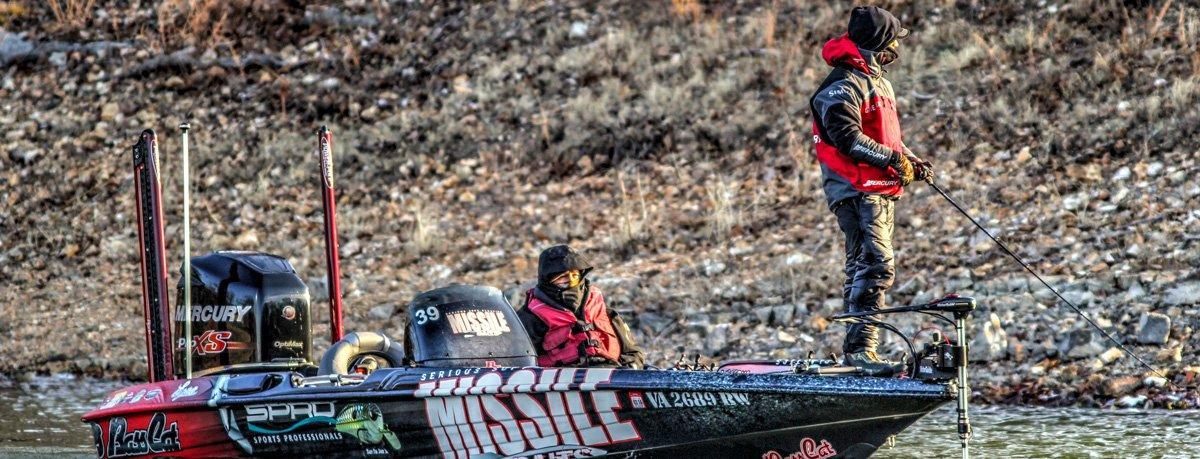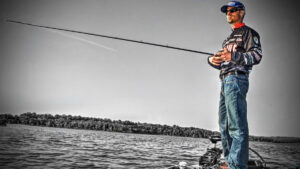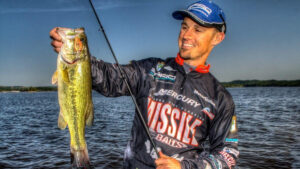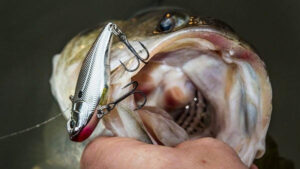Aquatic vegetation benefits bass anglers immensely. Abundant vegetation dramatically increases a lake’s productivity, meaning more of everything, from phytoplankton to baitfish – which generally results in more and bigger bass.
Fishing aquatic vegetation is also a blast. Flipping, frogging, big weights and big bass are enough to get even the most even-keeled bassers’ hearts pumping.
Unfortunately, the lack of sun and cold temperatures during winter kill most or all of the aquatic vegetation in many lakes. This effectively shuts down the grass bite each year leaving any remaining vegetation coated with algae and tough to fish.
But for every ebb there is a corresponding flow, and when the calendar flips again to spring, the sun’s warmth triggers the grass to begin growing, which in turn provides cover for hordes of hungry bass as they move toward the shallows to spawn.
Fishing emerging grass can provide some of the hottest action of the year. It can also be frustrating, because finding bass in expansive grass flats can sometimes be reminiscent of an old story about a needle and a haystack.
Fortunately, veteran Elite Series pro John Crews is an expert at breaking down emerging grass beds, something that has resulted in some of his most memorable spring trips.
“Emerging grass is an absolute bass magnet in the springtime,” Crews said. “They are moving toward their spawning areas, and if they see some fresh vegetation along the way, they’re going to stop on it. Emerging grass is super clean and it is highly oxygenated and holds tons of food for them, so when you find them, you should get ready to put a hurting on them.”
FINDING THE GRASS
You can’t fish what you can’t find, so the first step to fishing emerging grass is to find it. That can be easy enough if you live on a lake and have extensive knowledge of areas that are perennially grassy. But what if you’re on an entirely new lake?
If you’re John Crews, you spend some serious time looking around with your electronics.
“Finding and fishing emerging grass is another place where modern electronics have become a game changer,” he said. I run Lowrance HDS Touch screens, and use the StructureScan to quickly idle through areas until I find the grass. It shows up really well as ‘fuzzy’ clumps on the screen.”
Although side imaging sonar is an effective way to find emerging grass, it will also show up on conventional 2D sonar as a layer of weaker signal on top of the bottom.
FINDING THE BASS
Locating a productive grass bed is only half the battle, you’ve also got to figure out if it holds bass – no easy task if the area is large or if the bass are concentrated, which is a common occurrence.
“To find bass in emerging grass, you need to think of it the same way you would if the grass was all the way up to the surface,” Crews said. “You need to focus on irregularities like points, inside turns, holes or depressions. The bass will congregate on those little changes just like they do the rest of the year; it’s just a little harder because you’re fishing blind.”
Finding irregularities in a submerged grass bed can be difficult, but anglers can make it a lot easier by focusing on changes they can see on their locator, like a depth change.
“Depth changes often define the edges of a grass bed,” Crews said. “If you know that the grass in a particular area generally stops at 4 feet, you can concentrate on that 4-foot contour line and know you’ll be close to where the grassline stops.”
And the nice thing is both smallmouth and largemouth love emerging grass.
COVER WATER
But what do you do if there aren’t any obvious irregularities, or if the emerging grass bed is so vast you can’t possibly diagnose it in a day?
In those cases, you’re just going to have to put the trolling motor down and cover water.
“Fishing submerged grass is one of those deals where you’re occasionally going to have to just roll your sleeves up and go to work to find the sweet spot,” Crews said. “For every time I’ve been able to just look on a map or my electronics to find the best looking areas, there are others where I just had to cover water until I found the fish.”
For covering water, Crews relies on the combination of a traditional crankbait like the Spro Little John, and a lipless crankbait like the Spro Aruku Shad.
CONTACT THE GRASS
With many moving bait techniques, creating a deflection triggers more bass to bite. Fishing bass in emerging vegetation is no different; however the deflection you want to create won’t come from your bait bouncing off of something, but rather from contacting and tearing free of the emerging grass.
“Without exception, when I’m fishing emerging vegetation, I want my bait to be making at least occasional contact with the grass,” Crews said. “You’ll actually be surprised with how well baits come through emerging grass compared with the rest of the year. The early vegetation is really clean, so when you snap your rod tip it your bait almost always comes out clean.”
In addition to choosing baits that run the proper depth for the height of the submerged vegetation, Crews also utilizes a number of different retrieves to trigger strikes from grass bed bass.
“Fishing emerging vegetation is one of the best times of the year to use a stop and go, or yo-yo retrieve,” he said. “Seeing a crankbait pause and then rip clean of the grass is an irresistible sight to bass. They will be all over it. Yo-yoing a lipless bait has the same effect, and it’s a great way to generate additional strikes after you’ve already fished through an area once.”
RIG IT UP
For cranking emerging grass, Crews opts for a Cashion 7-foot, medium-heavy crankbait rod paired to a 6.4:1 reel spooled with 12-pound Sunline FC Sniper. Most commonly, he’ll complete that setup with a Spro Little John 50 crankbait in Spring Craw, which runs 3-5 feet deep.
For throwing a lipless crank, Crews chooses a longer, 7-foot, 3-inch Cashion medium-heavy crankbait rod, a 6.4:1 reel and 30-pound Sunline SX1 braid for ripping the bait through cleanly. For submerged grass in the 3 to 6 foot range, Crews uses the ½ ounce Spro Aruku Shad 65, but will go up to the bigger Aruku Shad 75 if the water is 6-10 feet deep.
















